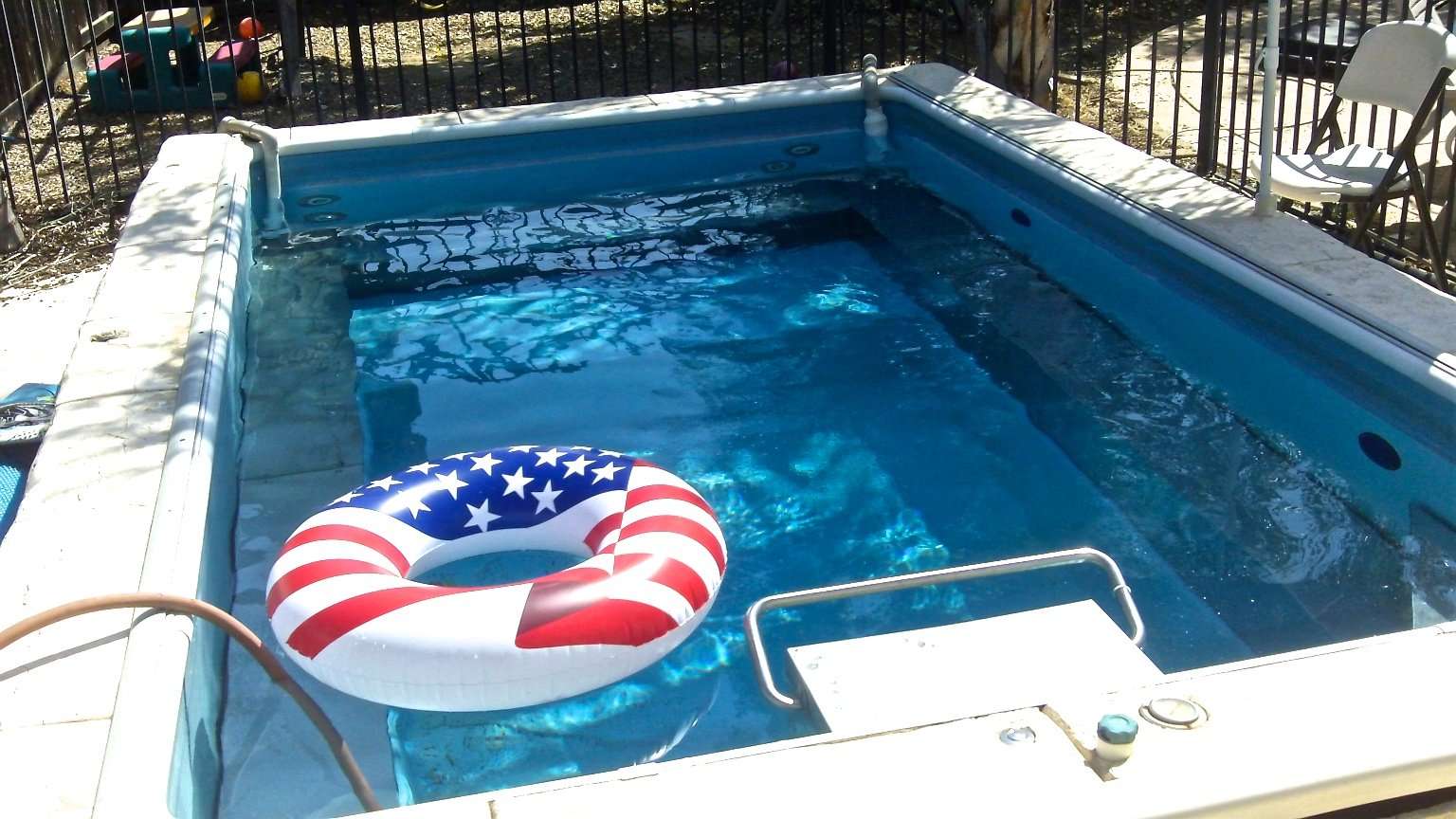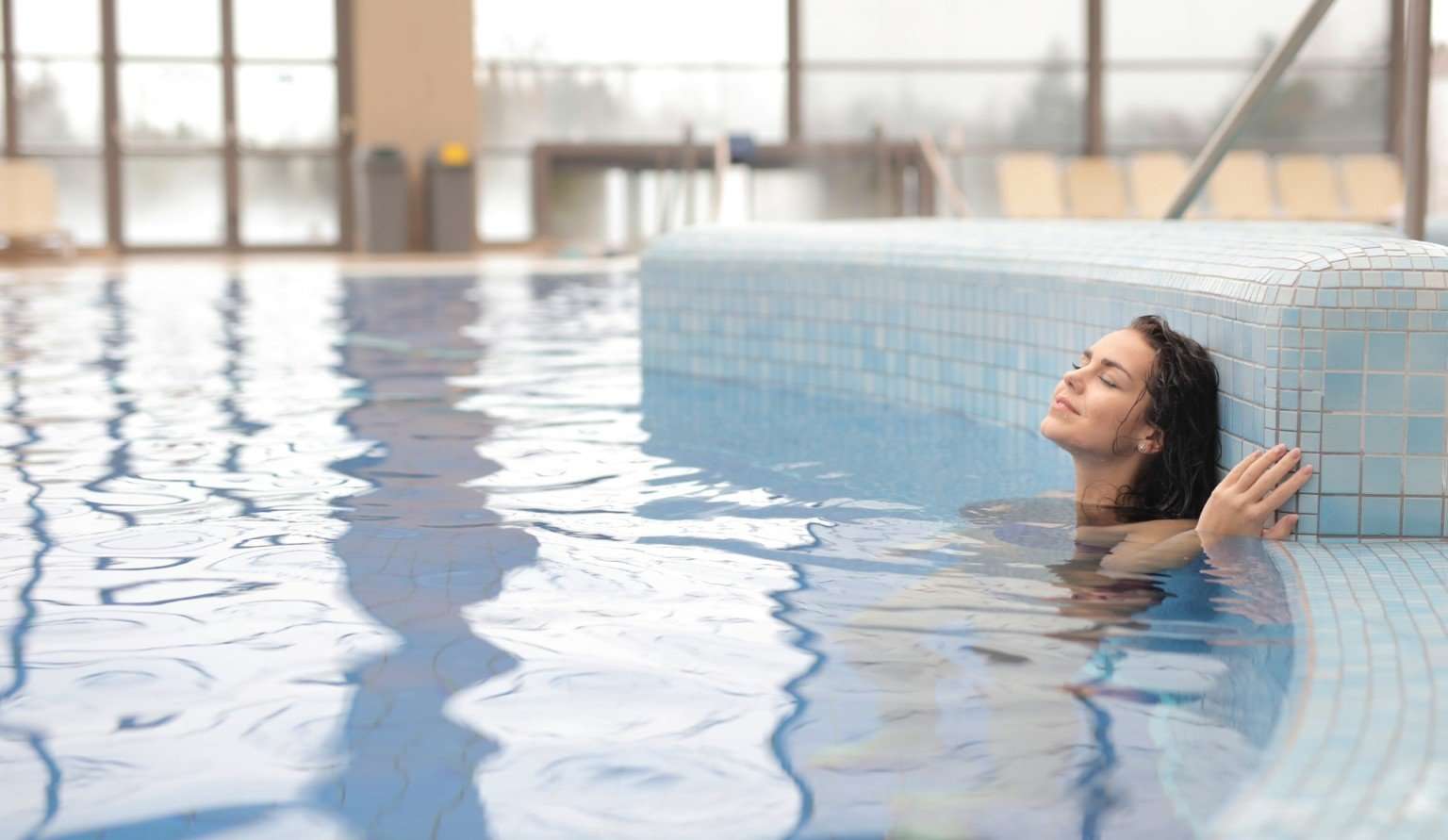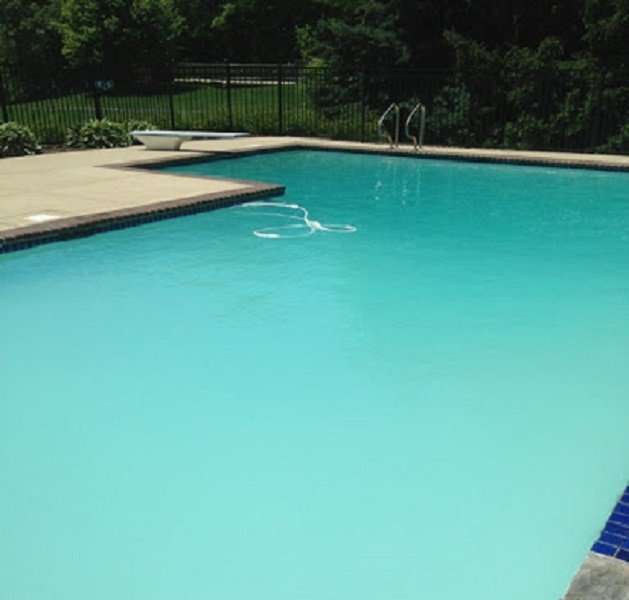How To Raise Swimming Pool Total Alkalinity Levels
Swimming pool water chemistry requires the operator or technician to maintain a total alkalinity level that is set by industry standard. Ideally this level is between 80 to 120 ppm at all times. The pH level reading of a swimming pool or spa is govern by the total alkalinity level.
To raise your pool alkalinity level, you will have to add a swimming pool chemical called Sodium Bicarbonate which is another name for baking soda frankly.
Still, you must be aware that Sodium Bicarbonate will also cause an elevation in your pH levels as well. There are times when you may just want to raise your pH levels without affecting your total alkalinity. You can accomplish this by adding Soda Ash to your pool water.
Soda Ash is by no means the same as Baking Soda. In other words, it is not Sodium Bicarbonate. The table below gives a clear indication of what amount of Sodium Bicarbonate you will need to add to achieve a proper level of total alkalinity in your water.
How To Lower The Alkalinity In Your Pool
In this guide you’re going to learn how to lower the alkalinity in your pool .
To lower the alkalinity in your pool, try using a strong acid like muriatic acid, sodium bisulfate, or sulfuric acid all of which will lower the alkalinity.
If your pool water is a little murky or your pool filters seem to be plugged with calcium deposits, then your pool may be suffering from high alkalinity levels.
In today’s post, you’re going to learn all about water alkalinity, what causes your pool alkalinity to get too high, and how to lower it.
Let’s dive in!
Why Is Pool Alkalinity Important
The ideal pH level for your pool water is slightly alkaline at 7.4 to 7.6
This lean towards alkaline is intentional because its where chlorine works best, as well as being easy on your skin and your pool equipment. There is some wiggle room here, but not all that much.
Unfortunately, pH is extremely sensitive and can quickly be thrown out of balance by temperature changes in the water, not to mention foreign substances such as rain, debris and even bodily waste.
Spoiler alert: Thats where good ol alkalinitycomes in.
The solution to maintaining your pH level is to add a pH buffer, which is exactly what alkalinity increasers are. You can almost think of alkalinity as adding a layer of armour to your pH, absorbing fluctuations and keeping your pool chemistry stable.
Also Check: How To Seal A Concrete Pool
How To Lower Alkalinity And Ph
Natural aeration is highly recommended, but if you need faster results, at the end of this article I have included a list of equipment that will help speed up the process and instructions for how to use it. Extra care must be taken to avoid over-aeration if you decide to use aerators because over-aeration raises the pH levels and lowers the calcium carbonate levels beyond recommended levels, which can cause significant damage to the pool.
Can You Swim In A Pool With A High Level Of Alkalinity

Like mentioned above, a pool with a high alkalinity level can cause dry and irritated eyes, ear aches, dry skin, and an itchy scalp. So, its best not to swim if you think that the alkalinity level of your pool is high. If you have to, wear goggles, use ear plugs, and limit your time in the pool. Above all, get the alkalinity level of your pool where it needs to be as soon as possible. Its good for your health and the longevity of your pool.
Read Also: Prices On Endless Pools
How To Lower Alkalinity In A Pool
If the alkalinity of the water is too high, i.e. more than 120 ppm, its an easy fix to lower the alkalinity of the water.
First, make sure the water pump is on and take a current pH measurement.;
Add one quart of muriatic acid or 2 pounds of dry acid at a time around the perimeter of the pool.
Let the acid mix in the water for about an hour, then test the water again. Maintain a water pH of about 7 and keep adding pool acid in small increments until the correct alkalinity level is reached.
Once the alkalinity level is correct, allow the pH to climb naturally by circulating the water.
Only add soda ash to raise the pH if the pH stops climbing after 1 week.
Causes Of Rising Alkalinity
If your pools pH level is on the rise, this will eventually begin to influencein this case, increaseyour alkalinity along with it.
An increase in pH is tends to come from body lotions or sweat washing off into the pool, as well as potentially using a high alkalinity water source to fill up your water.
Its also not uncommon for pool owners to go a bit overboard when shocking their pool, and since chlorine-based pool shock is a high-alkaline substance, it will also naturally raise your pool alkalinity.
Also Check: How To Convert Chlorine Pool To Saltwater Pool Cost
When Youve Got Astronomical Alkalinity
Learning about pool chemistry can be overwhelming. Even for seasoned pool owners, problems sometimes crop up that leave you wondering where the heck you went wrong with your water.
The range youre shooting for with alkalinity is somewhere between 100 parts per million and 150 ppm, with 125 ppm being ideal.
One of the most important things to remember about high alkalinity is, if you can afford to wait, it will decrease over time on its own. But high total alkalinity is problematic for a couple of reasons including algae, which can quickly become a problem when your pool has high alkalinity, so its often worth addressing with chemicals.
When your pools pH is high, the water is called basic, meaning it lacks the right balance of acidity. When this happens, the water becomes soft, flaky, and prone to calcium buildup.
Scaling and flakes due to high pH or alkalinity can clog your circulation system and filter. Your sanitizer will have to work harder, leading you to add more chlorine. You may even start to notice your pH levels rising over time when the total alkalinity is high.
High pH can lead to high calcium hardness and high alkalinity. Because pH is naturally unstable, it needs a buffer to help it stay in optimal range. Thats what alkalinity does. It helps prevent pH from changing too much, too fast.
When you lower alkalinity, youll also be lowering pH. The chemicals used to reduce one, work on both naturally, but pH tends to be more intensely affected than alkalinity.
What Causes High Alkalinity In Pool Water
There are quite a few reasons why the water in your pool is experiencing high levels of alkalinity. Once you understand what is causing the problem, then you can then start fixing the problem.
One of the most common reasons why alkalinity levels are so high in pools is because of too many chemicals. This is usually the result of human error. However, for people who live in a geographical area that experience acid rain, this can be a common problem. The acid rain can continuously change your pools pH level.
Another reason why the alkalinity in your pool may be too high could be the result of both sweat and lotion. Crazy huh? The reason being is because sunscreen has a lot of chemicals in it, and when you spread it on your body and then sweat in the sun, these chemicals get into the pool and change the pH levels. This is also the case for soaps and body washes too.
A third reason why the alkalinity of your pool water may be too high could be attributed to a sudden rise in the temperature of the water. If the morning temperature is quite brisk and then it gets much warmer throughout the day, the alkalinity level of your pool water may increase by quite a lot.
You May Like: Monthly Pool Service Cost
Total Alkalinity Vs Ph And Their Roles In Water Chemistry
Have you ever asked “what’s the difference between pH and alkalinity? Many of us in aquatics confuse total alkalinity and pH. Its understandable, given how blurred the line is between words like alkaline and alkalinity. Indeed, alkalinity and pH in water chemistry are closely related, but they are not the same. This article will distinguish between them.
Listen to this topic on our Podcast:
What Level Should You Be Looking For
To avoid pH bounce or lock you should be looking at a total alkalinity level of no less than 80ppm and no higher than 160ppm. The lower limit is also important as not only can this result in pH bounce but also some flocculants and clarifiers do not operate correctly below 80ppm. Commercial alkalinity increasers are available if the level does need to be raised. Reducing alkalinity levels is a little trickier.
You May Like: How To Clean Tile Grout In Swimming Pool
How To Raise Alkalinity In Your Pool
If your alkalinity level goes below the recommended range, youll need to add a substance to your pool water to help bring it back up.
Most pool experts will tell you to use a product branded as alkalinity up or alkalinity increaser, but these all contain baking soda which is readily available as a cheaper, standalone product. The latter works just fine.
- Made from anhydrous pure powdered sodium…
- Use as a cleansing booster with your laundry or…
- Great household product for any thing that needs a…
The other option is to use soda ash . This tends to be cheaper than baking soda but is less effective at raising alkalinity, and more effective at raising pH. It can also cloud up your pool water, so youll need to leave your filter system running after use.
Can You Swim In Pool With High Alkalinity

No, it is not safe to swim with high alkalinity. The high alkalinity can cause problems with you as well as the pool. A pH above 7.8 can cause cloudiness in the water and scale along the sides of your pool.
You may ask, Does pool shock raise alkalinity?
If the alkalinity reading is low, then most likely the pH reading is low and visa versa. Typically chlorine shock contains alkaline which will help raise the alkaline level. On the flip side of that, chlorine tablets which contain cyanuric acid tends to lower the alkalinity.
Also Check: Swimming Pool At Jones Beach
Its All Coming Up Alkaline
Thats a job well done. Now that you know how to use this common chemical to increase alkalinity, keeping your pH and total alkalinity at the perfect levels will be a breezewhich, by the way, hopefully didnt blow baking soda into your eye.;
Not only do you have a heavier wallet, but your waters are going to give an even more comfortable swim. Ahhh…;
Congratulations, and see you at the pool.
First Test Your Water Chemistry
Before you go adding a bunch of chemicals to your pool water, you need to test your water to get accurate measurements of your current alkalinity level. Read our guide on testing your pool water with a testing kit to learn how to do it effectively.
Once you have your reading, youll know whether your alkalinity level is too high or too low . To raise your alkalinity levels, youll add sodium bicarbonate to your pool water. To lower it, youll use muriatic acid or sodium bisulfate. I know what youre thinkingbaking soda? Yep, there are also other household products you can use to clean your pool.
Also Check: Does Target Carry Pool Supplies
What Should Alkalinity Be In A Pool
As a pool owner, you either know or will find out in time that the pH and alkalinity are two very important features of your pool. Fortunately, you can keep these both in balance when you know what to look for.
The best alkalinity range for a swimming pool is anywhere between 80 and 120 parts per million . Additionally, the best range in pH is between 7.2 and 7.6.
The bottom line is that when your swimming pool total alkalinity exceeds 120 ppm, you need to begin the process of lowering it.
Calculate What Chemicals To Add
Like I mentioned above, you either add baking soda or muriatic acid to raise or lower your pools total alkalinity level. Enter your total pool volume and total alkalinity reading below to find out what and how much to add. Ive already pre-filled the desired total alkalinity level to 100 ppm, but if youre shooting for a lower or higher number inside the ideal range , feel free to adjust it. If your total alkalinity levels are too high, use the instructions that come with the muriatic acid you purchase to figure out how much to add, since concentration differs by brand.
All done! Need more help adding the right chemicals? Read our pool chemistry guides below to coach yourself up and let us know if you have any questions.
Also Check: What Causes High Cyanuric Acid In Pools
Tips On Raising Alkalinity In Pool
Increasing alkalinity in your home pool is a very simple and straightforward process that you should be able to complete in a matter of minutes. Before you begin this process, there are a few tips that you might want to keep in mind, which include:
- Different pools will oftentimes provide different measurements when testing alkalinity levels. As you continue to use your pool and measure alkalinity levels, you may start to notice patterns in how the alkalinity increases or decreases. Once you recognize these patterns, its highly recommended that you take them into account when increasing the alkalinity of your pool water, which means that you might want to adjust the amount of sodium bicarbonate that you place in the water.
- To determine how much sodium bicarbonate you should add to your pool, its important that you take the package instructions into account as well as the current alkalinity measurements of the pool water and the size of your pool. By adhering to these factors, you can avoid raising the alkalinity levels too high.
- The exact type of pool you have can determine what your alkalinity levels should be. In most cases, maintaining alkalinity levels at 100-120 PPM should be enough for fiberglass, gunite, concrete, and vinyl pools.
Figure Out How Much Acid You Need
First, youll need to know how many gallons of water your pool holds as well as the pH and alkalinity levels. If youre lowering your pools alkalinity and pH, you can calculate how much muriatic acid to add so your pH is just below optimal range. This will bring your alkalinity down to normal, then you can run the pump to aerate your pool and gently nudge the pH upward.
The label on your muriatic acid should help you determine how much to add, but if it doesnt, you can plug your figures into an online calculator.
You May Like: Is The Mandalay Bay Pool Open
What Does Baking Soda Do For A Pool
Baking soda, also known as sodium bicarbonate is naturally alkaline, with a pH of 8. When you add baking soda to your pool water, you will raise both the pH and the alkalinity, improving stability and clarity. Many commercial pool products for raising alkalinity utilize baking soda as their main active ingredient. You can maintain your pool for a fraction of the cost by going straight to the source and using pure baking soda in your pool.
What Causes Low Pool Alkalinity

The following points are to be considered as culprits for pool alkalinity;
- Use of dry acid or muriatic acid. These chemicals, although useful in treating swimming pool water, are notorious for reducing pH concentration in water. A way of fixing this is by applying only a prescribed dose of the chemical in case there is a need to lower your pools pH. Then you can test your pools alkalinity level after 6 hours.
- It probably rained hard. Rainwater might be low in alkaline levels, and when it rains hard, your pool may become flooded, and this will affect the average alkalinity of your pool.
- If you drain or backwash your pool, adding freshwater with a low alkalinity level is bound to deplete the overall pH of your pool.
Recommended Reading: Can You Heat An Above Ground Pool
How To Bring Ph Back Down
Balancing your pool can be tricky, and you may find after raising the alkalinity that the pH level is now too high.
You can lower the pH by adding a measured amount of muriatic acid or dry acid to your pool water. Sulfuric acid is another option, but it significantly raises your TDS levels too.
Muriatic acid is highly corrosive so always make sure you take extreme safety precautions when using it. Instructions on the bottle will help you with the correct dosage for your pool, and adding it is simple using a 10:1 solution thats diluted with water.
Dry acid is a milder option that comes in granular or powder form, which makes it slightly easier to work with. Its also more expensive and just as dangerous if mishandled. Once again, its best to follow the instructions on the label.
Be aware that lowering pH will also ultimately lower alkalinity using the methods described above. In that case, you can use baking soda to raise alkalinity with minimal effect on pH.
Finally, as usual, use water testing methods before and after to lower the pH to between 7.4 and 7.6, the ideal range for neutral pool water.
